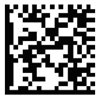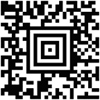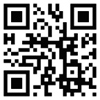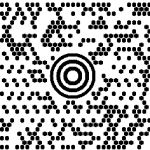Wasp Barcode Technologies: The Barcode Solution People
2D Barcode Symbologies
Do you know what 2D barcode symbologies are? They are two-dimensional barcodes that consist of patterned blocks, circles, and squares that resemble the no-reception static on a TV. Often physically smaller in size than linear
barcodes, they contain hundreds of characters of data.
Because of their larger storage capacity, 2D
barcodes—such as QR code and PDF417—do not require databases. You simply scan them to instantly access the information you need. In fact, consumers frequently scan 2D barcodes from their smart phones and tablets to access information about products. However, companies require 2D scanners to read 2D barcodes.
Why 2D?
This type of symbology got the name ‘2D’ because a barcode scanner must capture both the entire width and length of the barcode to decode the data. With
linear barcodes, a scanner only needs to capture the width.
In addition to storing large amounts of data, 2D
barcodes have another distinct advantage: They use error correction formulas, which allow them to still be read when moderately damaged.
Common 2D barcode symbologies
As with linear
barcodes, there are varieties of 2D barcodes. Common ones include:
|
COMMON 2D sYMBOLOGIES
|
|
Name
|
Use
|
Type
|
Example
|
|
PDF417
(Portable data file with 4 bars and 4 spaces in a 17-module structure)
|
- Commonly used for printed U.S. postage, airline boarding passes, driver licenses, and state ID cards
|
- A high-density symbology that securely and inexpensively stores large amounts of text and data
- Holds almost any letter, number, or character
- Can encode up to 340 characters per square inch with a maximum data capacity of 1,850 text characters
- Does not require a check digit for error correction; instead uses Reed Solomon, which allows some damage without causing loss of data
|

|
|
Data Matrix
|
- Used by the U.S. Department of Defense
- Commonly used for direct part marking (DPM) in the aerospace and automotive industries
- Recommended by the Electronic Industries Alliance (EIA) to mark small electronic components such as circuit boards
|
- A very efficient symbology with a complex encoding and decoding process
- Can encode all 128 ASCII characters and a number of different character sets, including Unicode
- Borders have two solid and two dashed edges with black and white cells inside and a perimeter quiet zone
- Accommodates up to 500 MB per square inch with a data capacity of 1 to 2,335 characters
- Has a high degree of redundancy, resists printing defects, and can be read when damaged up to 60%
|

|
|
Aztec
|
- Widely used by European airlines for online ticketing and by the healthcare industry
- Selected as the standard for electronic boarding passes on mobile devices by the International Air Transportation Association (IATA)
|
- Can encode all 128 ASCII characters and holds up to 1,914 bytes of data
- Easily recognized due to its square design with centralized bulls eye
- Enables passengers to use boarding passes from mobile devices and allows nurses to scan barcodes without disturbing patients
- No quiet zone required outside the bounds of the symbol
|

|
|
QR Code
(Quick Response)
|
- Commonly used to encode marketing URLs on everything from magazines and mailers to billboards and packaging
- Extremely popular, QR codes are easy to scan with smart phones and mobile devices
|
- Uses a small area of square modules with a unique perimeter pattern
- Designed to be decoded at high speed
- Used by mobile barcode reader apps to scan a QRC, launch the device’s browser, and redirect users to the programmed URL
|

|
|
MaxiCode
|
- Commonly used on shipping labels for global addressing and package sorting by UPS
|
- An international symbology that is a fixed size
- Consists of two offset rows of hexagonal modules arranged around a unique finder pattern
- The primary message usually encodes the postal code, country code, and class of service number
- The secondary message usually encodes the address but can also encode other types of information
- Includes error detection so slightly damaged barcodes can still be read
|

|
Are you unsure which barcode to use? Read
Linear vs. 2D Barcodes - Which is Right for You?






